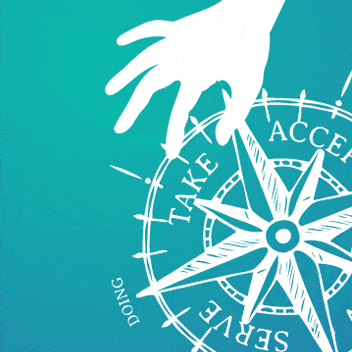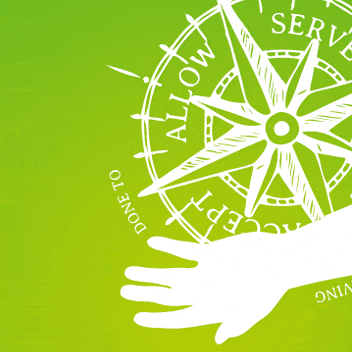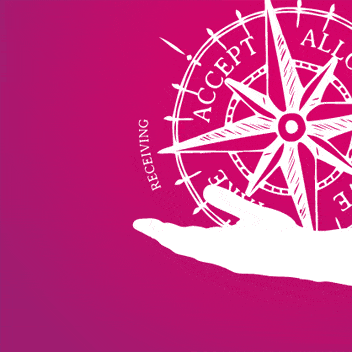
Why lockdown is the perfect time to learn how to touch
Yes you read that right! In many ways being on lockdown, quarantined, or isolated from other people, is almost the perfect environment to learn how to touch. And here’s why…
We need touch education
Remember those classes at school: ‘how to do touch right’? No, neither do I!
Most of us have had no formal education about how touch works (either physically or emotionally). We’ve learned by trial and error. Often – literally – fumbling around in the dark. Some of us may have had some good experiences. Most of us some not so good ones.
Touch is complex at the best of times, but our lack of education has made it even more complicated. Our experiences have left most of us with a confusing mix of expectation, desire, and fear around touch.
What outcome do you want from touch?
On top of this our culture encourages us to be goal-oriented – so we tend to think about touch in terms of the outcome, focussing on the action, or the type of touch rather than why we want it (or don’t want it).
When it comes to outcome we’ve also learned to think about touch in very binary terms – we tend to assume that if we’re doing the touch it must be for someone else (think of how we refer to ‘giving someone a massage’).
Touch and pleasure – who is it for?
We’re much less likely to think about the action of touch being for our own pleasure.
But think of your hands running over a piece of soft velvet, or through warm water. We know things can feel good to touch, but we don’t often give ourselves the opportunity to explore this consciously – especially when there’s another person involved.
What most of us need to get better at is touching for our own enjoyment – just ours, no-one else’s.
When you learn to follow the impulse of what you want, to trust what feels good in your own skin, and to value your desires around that, something changes:
It then becomes much more possible to touch someone else for their benefit, willingly and wholeheartedly, without your own needs getting in the way (and when I say ‘needs’ think of the times you’ve offered someone touch you secretly wanted for yourself and hoped they would reciprocate with).
That’s why it’s best to learn to touch without touching someone else
When you’re starting out with this stuff it makes things much easier if you learn how to touch without touching someone else.
Taking the other person out of the touch equation helps sidestep all those things that can complicate it – your baggage, their baggage, wondering if they’re OK with how you’re touching them, trying to please them, wanting something in return…
Your own hands are the key
Your hands contain more nerve endings than almost any other part of your body. They are the perfect conduit for connection. Yet you’ve probably never thought of them as much more than tools to achieve tasks.
When you learn to touch without touching anyone else, you are waking up your hands, sensation, and feeling – without having to worry about someone else’s reaction.
It’s the key to understanding your own relationship with touch. You become more connected with yourself, and what you want. Ultimately, with practice, this leads to becoming better at more engaged and consenting interactions and relationships with others too.
It’s one of the central elements of the Wheel Of Consent, which I teach as part of the School Of Consent workshop team.
Plan for touch after lockdown
We’re in an unusual time when many of us are being encouraged (or even forced) to spend long periods of time without physical contact. When we come out the other side a lot of us will probably be touch-deprived.
Wouldn’t it be great after lockdown, when you’re free to choose touch again, if you were able to navigate it with more clarity and understanding?
Join me on my simple, affordable short course: Learn To Touch Without Touching Anyone Else. In just 1 hour a day for 6 days, for as little as the price of a cup of daily coffee, you’ll discover a whole new approach to touch which will change how you feel.
As an added bonus, connecting to your body with touch is a really great way to regulate your nervous system. So if you’re feeling anxious or overwhelmed with what’s happening in the world right now, or feeling touch-deprived during lockdown, learning this practice will give you an important tool to help you feel calmer. And, of course, it’s one you can do on your own whenever you want!
The quadrants
Each quadrant in the Wheel Of Consent creates a different experience and teaches you something different about yourself. Learn more about each one:
Enjoyed reading this?
If you've found this page helpful you can get more tips and resources for better relating straight to your inbox. Sign up here and get my free How To Be Heard guide to start you off:
Explore more:
A simple approach to consent and boundaries
If you feel overwhelmed by the idea of consent and boundaries here are some simple things to focus on which will make it easier to understand.
Read MoreWhy are we so scared of talking in the bedroom?
Talking in the bedroom is often viewed as ‘dirty’ or avoided completely. Find out why it’s time to change that narrative.
Read MoreGiving and receiving explained – 6 key ways to tell the difference
If you think giving and receiving don’t need to be explained you might be surprised by this handy guide that breaks down the differences
Read MoreEvents & courses
Learn To Touch – Supported Self Study Course
Online. Discover a whole new approach to touch that will change how you feel – literally! A short, affordable, practical guide you can learn in less than an hour a day.
Read More







